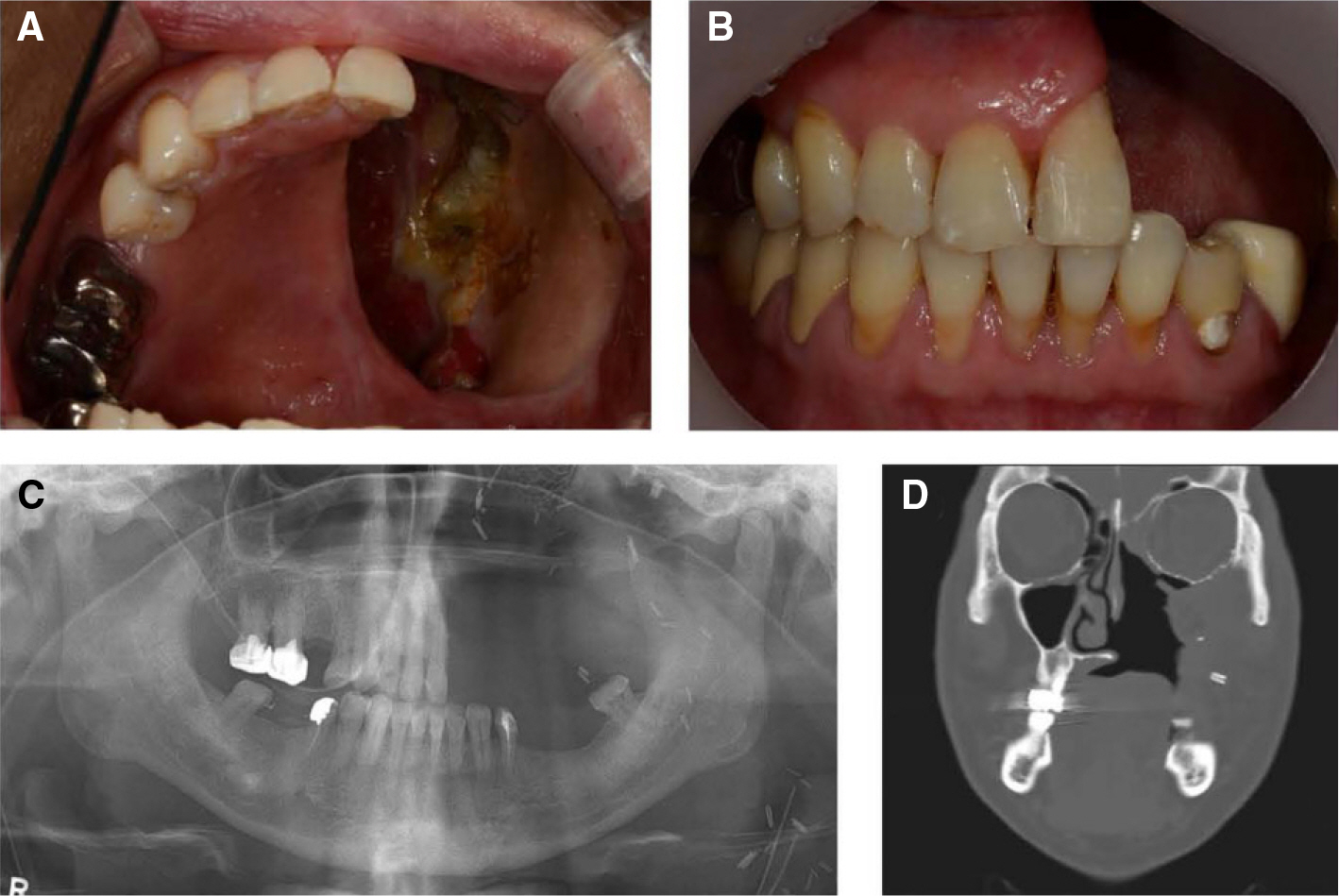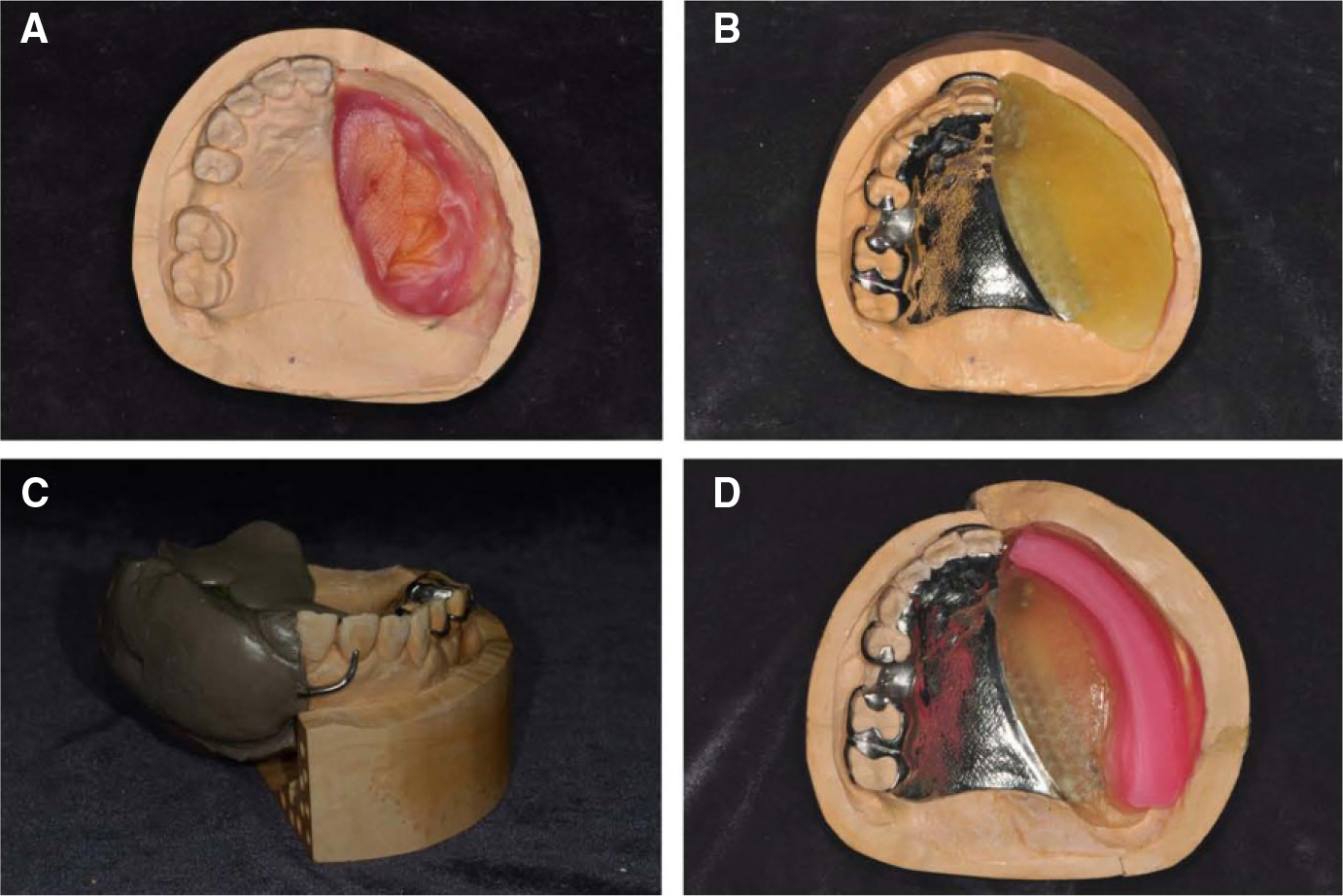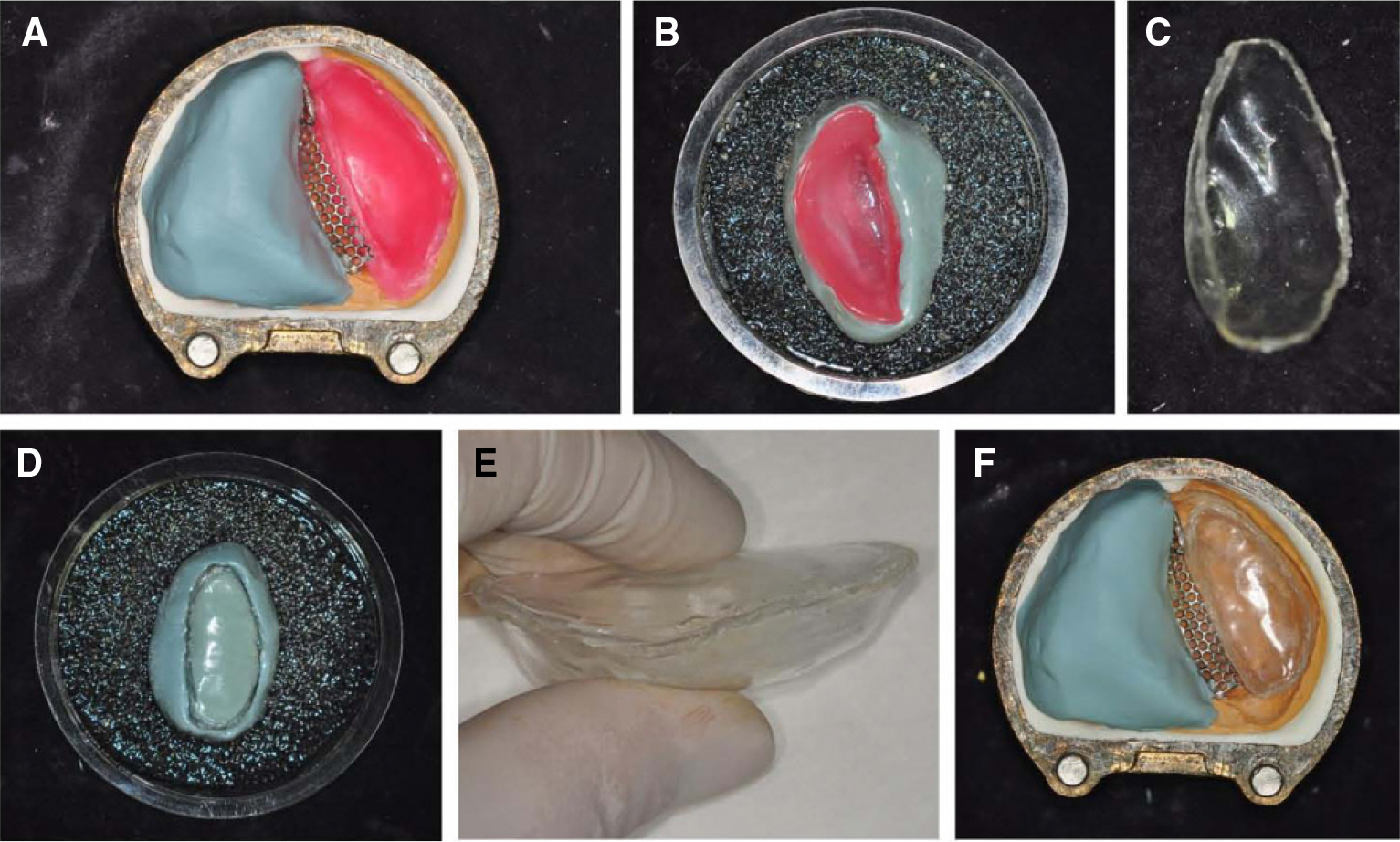J Korean Acad Prosthodont.
2016 Jan;54(1):35-40. 10.4047/jkap.2016.54.1.35.
Maxillofacial rehabilitation of hemi-maxillectomy patient using a closed hollow bulb obturator fabricated by one-step polymerization technique: a clinical report
- Affiliations
-
- 1Department of Prosthodontics, School of Dentistry, Seoul National University, Seoul, Republic of Korea. pros53@snu.ac.kr
- KMID: 2153047
- DOI: http://doi.org/10.4047/jkap.2016.54.1.35
Abstract
- The maxillary defects lead to anatomical and functional deformity of the maxillofacial region. As far as functions are concerned, such defects can produce difficulty in speech, mastication, and deglutition. Obturator prostheses play a very important role in functional recovery for post-maxillectomy patients. To achieve rigidity of the obturator, appropriate retention should be given, and the weight of the prosthesis be reduced. There are two types of hollow bulb obturator: open and closed. A closed type has many advantages. Nevertheless, some problems, including complexity of fabrication and water leakage into the bulb, have the closed hollow obturator not be widely used. The one-step polymerization technique described in this case overcomes the shortcomings by easily constructing a small hollow bulb with two thermoplastic resin sheets.
MeSH Terms
Figure
Reference
-
1.Keyf F. Obturator prostheses for hemimaxillectomy patients. J Oral Rehabil. 2001. 28:821–9.
Article2.Kanazawa T., Yoshida H., Furuya Y., Shimodaira K. Sectional prosthesis with hollow obturator portion made of thin silicone layer over resin frame. J Oral Rehabil. 2000. 27:760–4.
Article3.Roumanas ED., Nishimura RD., Davis BK., Beumer J 3rd. Clinical evaluation of implants retaining edentulous maxillary obturator prostheses. J Prosthet Dent. 1997. 77:184–90.
Article4.Kocacikli M., Yalug S., Yazicioglu H., Yilmaz C. Fabricating a hollow obturator with visible light-cured resin system. J Prosthodont. 2008. 17:596–8.
Article5.Habib BH., Driscoll CF. Fabrication of a closed hollow obturator. J Prosthet Dent. 2004. 91:383–5.
Article6.Hori K., Miyamoto T., Ono T., Yamamoto M., Shiroshita N., Maeda Y., Inoue M. One step polymerizing technique for fabricating a hollow obturator. J Prosthodont Res. 2013. 57:294–7.
Article7.Brown KE. Fabrication of a hollow-bulb obturator. J Prosthet Dent. 1969. 21:97–103.
Article8.Matalon V., LaFuente H. A simplified method for making a hollow obturator. J Prosthet Dent. 1976. 36:580–2.
Article9.Schneider A. Method of fabricating a hollow obturator. J Prosthet Dent. 1978. 40:351.
Article
- Full Text Links
- Actions
-
Cited
- CITED
-
- Close
- Share
- Similar articles
-
- Prosthetic rehabilitation for a maxillectomy patient using 3D printing assisted closed hollow bulb obturator: a case report
- A hollow definitive obturator fabrication technique for management of partial maxillectomy
- Fabrication of closed hollow obturator for hard palate defect patient undergone maxillectomy
- Prosthetic rehabilitation of partially edentulous patient after maxillectomy: A case report
- Prosthetic rehabilitation by double-processing technique for edentulous patient with soft palate defect after maxillectomy: A case report





